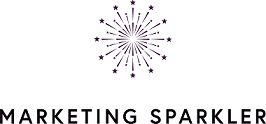What is conversion rate optimization (CRO)? Conversion rate simply means the percentage of website visitors, ad viewers or emailed customers that go on to convert. It’s the rate at which you turn opportunities for conversions – be that sales or form submissions – into real conversions.
However, despite being a vital part of any marketing strategy, CRO is often overlooked. The reason for this is two-fold. Firstly, many marketers are still stuck in a bricks-and-mortar mindset: they think about their site or their client’s site as a store, and they think of their role as being to get as much foot traffic moving through the store as possible.
The second reason is that CRO is often powered by more up-to-date data and technology. And not everyone’s caught up yet. Here we share five great tactics for optimizing your conversion rate.
5 Approved Strategies to Increase Website Conversions
1. Develop a CRO strategy based on data.
CRO often means changing what your customers see and experience based on who they are and what they want. And for that, you need data.
The standard analytics platforms can be really useful here. With Google Analytics and Facebook Insights, you can find out things like:
-
- How old your customers are
- What part of the world they’re from
- When they’re logging onto your site
- Which pages they love and which pages… not so much
Once you know who your customers are, you can go on to the next step.
2. Determine whether your CRO strategy is appropriate for your audience.
A definitive profile of your average customer might mean a rethink of your current strategy. Young professionals, baby boomers and teens are all likely to respond better or worse to certain messaging.
Likewise, on a more practical level, your customers’ browsing habits might reshape how you run your ads.
For example, if it turns out the majority of your site visitors browse your site on weekdays, but only convert on weekends, then you might want to redirect email and social budget to weekends only, when they’re more likely to convert.
However, not every customer is the same. Which leads us to the next step.
3. Use marketing automation to power dynamic content – targeting specific segments of your key demographic.
This is an example of where CRO is driven by the latest tech. Modern services like SharpSpring allow you to serve up different variants of key landing pages, and other content, to different segments of your demographic. This kind of flexibility is the future of CRO.
Essentially, you track your customers across different platforms, and build a demographic picture of them complete with interests and preferences. Then, when they land, your dynamic content serves up the version of your page, form or ad that’s most likely to chime with the particular user.
[Tweet “Use marketing automation to power dynamic content – targeting specific segments of your key demographic.”]
4. Polish your trust signals
One web page element which always has a high impact on website conversions is a page’s ‘trust’ signals. Broadly speaking, these break down into two categories:
-
- Peer trust – signaling to the customer other customers also love your products and services
- Expert trust – signaling to the customer that other experts in your field respect your work
To signal peer trust, include links and content from and to your social channels. Let your customers see how happy you make people just like them. For more in-depth trust signaling, feature a long-form testimonial. The best testimonials are those which deal with doubts customers are likely to have.
For expert trust, try featuring accreditations, prestigious partnerships or any glowing praise you’ve received from authoritative sources in your niche. Let them see you know what you’re doing.
[Tweet “Trust has a high impact on your website conversions. Are you using these signals?”]
5. Build instant trust with an out-there pledge that’s all for your customer.
A sure-fire way of earning your customer’s trust is to offer them a truly great deal straight off the bat. Understandably, customers can be a little less trusting online than they would be in-store, face-to-face with someone.
So, to jump that hurdle, go above and beyond as soon as they land. This could take the form of a money back-guarantee, a free sample or consultation, or a fantastic price reduction.
All of these tell your customer you’re sure they’ll be back after just a little exposure to your product.
Feel free to get a little creative here. A great example of a brand getting this kind of offer right is shoes.com mystery flash sale, which offers each visitor a custom, mystery deal they have to click to reveal. Who could resist?!
[Tweet “Do you have a conversion rate optimization strategy for your business?”]
Ciao,
Miss Kemya



